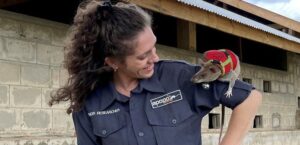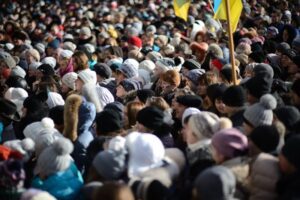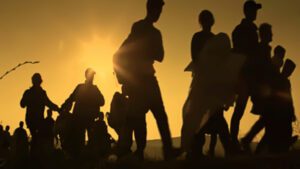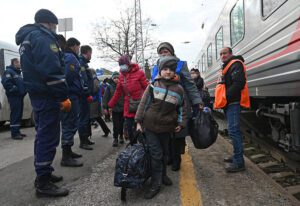
The combined wealth of the 81 wealthiest people exceeds half of the aggregate global figure, a report by charity organization Oxfam shows.
In the last two years, 1% of the richest people in the world have increased their wealth by $26 trillion, while the global figure has increased by $42 trillion, meaning that the wealthiest people accounted for two thirds of the growth, while the remaining 99% of the population altogether increased their wealth by only $16 trillion, according to the report presented at the World Economic Forum in Davos.
This indicates that the rate at which the wealthiest people are accumulating money has accelerated, CNBC noted.
Oxfam International executive director Gabriela Bucher called for higher taxes on the super-rich, saying it was “a prerequisite for reducing inequality and reviving democracy. In her view, changes in tax policy would help address ongoing crises around the world.
“Taxing the super-rich and large corporations is the way out of today’s overlapping crises. It’s time to shatter the convenient myth that tax cuts for the wealthiest result in their wealth somehow ‘trickling down’ to everyone else,” Bucher said.
The richest 1 percent account for 45.6 percent of the world’s wealth; the 50 percent with the least income account for just 0.75 percent, according to Oxfam calculations. Over the past two years, the wealth of billionaires has grown by an average of $2.7 billion a day.
There are only 124 women and five blacks among the 1,000 richest people.
The top personal income tax rates have become lower and less progressive, the report noted. Meanwhile, the average tax rate on the wealthiest in the OECD (which includes 38 nations) has fallen from 58% in 1980 to 42% recently. For the 100 countries, the average is even lower, around 31%.
As a result, many of the richest people on the planet pay almost no taxes. For example, the real tax rate of one of the richest people in history, Ilon Musk, head of electric car maker Tesla, is 3.2%. Another richest man, the head of Amazon.com Inc. Jeff Bezos – pays taxes at a rate of less than 1 percent. Meanwhile, one of the market traders Oxfam works with in Uganda, Aber Kristin, pays 40% of his income in taxes.

The Belgian NGO APOPO trains rats to search for people trapped under rubble, such as after earthquakes or hurricanes.
Previously, APOPO spent more than a decade at its base in Tanzania training dogs and Gambian hamster rats to search for mines and identify those infected with tuberculosis. The idea of rescue rats at APOPO had been nurtured for years, but the NGO lacked funding and a partner. The new project was launched in April 2021.
“Usually rats are quite curious, like to scout the area, and this is the most important thing for search and rescue operations,” said project leader scientist Donna Keane.
The rats are trained to search for survivors in an environment depicting a disaster area. Rodents are equipped with a high-tech “pack” that is attached to their body with a neoprene vest: after the rat finds the desired object in the room, it must pull the lever, giving a signal about the find, and then return to the base, where it will receive a reward for success.
Rat training is still at an early stage. APOPO, meanwhile, is working with the Technical University of Eindhoven in the Netherlands on a rat rescue pack: the prototype is a 3D-printed plastic container containing a live video camera, a bi-directional microphone, and a location-tagging transmitter. According to the developer of this equipment, Sander Verdizen, at first the rats did not understand what to do with it, but quickly adapted. “At the end of the day, they were just running around with a satchel, no problem,” he said.
However, the miniaturization of equipment, its adaptation to the conditions of the disaster zone turned out to be not an easy task. So, the GPS signal often does not pass through the ruins of destroyed buildings, but experts managed to get around this problem with the help of other trackers. Verdizen is also trying to make the “pack” more compact: although the current one weighs 140 g – twice as much as planned, its main problem is its size, with the current 10 cm in length. Later this year it is planned to introduce a modified version of the equipment.
Meanwhile, in Tanzania, Keane is making training more difficult for rats, preparing the animals for action in a real environment, accustoming them, for example, to the sounds of drilling equipment. So far, the results are encouraging: Keene says the rats are adapting well to increasingly challenging training environments. She recalled that from birth, rats have to survive in a variety of environments, including close to humans, which makes these mammals more stress-resistant in extreme situations.
However, APOPO does not forget to take care of future rescuers. They are not constantly trained – five days a week in sessions, fed with fresh fruits and vegetables, given time to relax in the playroom, although this pastime differs little from their training.
It takes at least 9-12 months to prepare a rat. In the meantime, Keane is planning the next stage of their training: teaching them how to operate in an environment that simulates a multistory collapsed building. Once the rats are comfortable with this, the plan is to move the project to Turkey, where APOPO’s partner, the volunteer rescue organization GEA, is based, and continue training the rats in an even more realistic environment. And only after that the rats can already be allowed to rescue work.
“Even if our rats can find one survivor in the ruins, I think we’ll be happy because we did a good deed,” said Keene.

The Ministry of Social Policy says that since the introduction of martial law, more than two million people have registered as internally displaced persons.
“I know that now, when talking about internally displaced persons, they often talk about people who have moved after martial law. But the war has been going on for eight years, and the number of those who have been forced to leave their homes since 2014 and seek asylum in other regions of the country is higher. To date, the Unified Information Database on Internally Displaced Persons has information on 3.4 million people,” the ministry’s press service quotes the Minister of Social Policy.
It is noted that more than two million of them are people who were forced to move after the introduction of martial law.
According to the report, most people after the large-scale military invasion of Russia moved to Lviv, Dnipropetrovsk, Poltava, Vinnytsia and Kyiv regions.
Most internally displaced persons are registered in Donetsk, Luhansk, Kharkiv, Dnipropetrovsk and Kyiv regions.
The Ministry of Social Policy also reports that more than 225,000 people have registered as internally displaced persons through Diia.

On April 8, 41,000 people crossed the state border from Ukraine to the EU and Moldova, compared to 34,000 the day before, about two-thirds came to Poland, which is in line with the average values, the State Border Service said in a Facebook post on Friday.
According to the data of the Polish border service on Twitter, on April 8, 27.5 thousand people entered the country from Ukraine, which is 17% more than the day before, but over the first 7 hours of Saturday, the flow decreased by 4.4% to 6.5 thousand 16.6 thousand people left Poland for Ukraine on Friday.
According to the State Border Service, the flow of people entering Ukraine on April 8 increased slightly – from 25 thousand to 26 thousand, including citizens of Ukraine – from 22 thousand to 23 thousand.
All checkpoints on the western border (except “Dzvinkove” – from 8:00 to 20:00 and “Kosino” – from 8:00 to 24:00) operate around the clock.
The State Border Service also reported that over the past day the number of registered vehicles with humanitarian cargo increased to 660 from 550 the day before.
According to UNHCR data, at 13:00 on April 8, a total of 4.36 million people left Ukraine since the beginning of the war, of which 2.56 million went to Poland, 745.07 thousand to Romania and Moldova, and 431.89 to Hungary. thousand, Russia – 389.85 thousand, Slovakia – 310.99 thousand, Belarus – 19.1 thousand.

Since February 24, 1.9 million people have left Ukraine for Poland, the Polish Border Guard Service has said.
“Since February 24, some 1.95 million people have arrived from Ukraine to Poland. Yesterday, March 16, border guards registered 60,000 people, a decrease of 11%,” the border guard said in a statement on Thursday.

Since the beginning of hostilities in Ukraine, Ukrzaliznytsia has evacuated more than 2 million people, Deputy Head of the President’s Office Kyrylo Tymoshenko said live on the information marathon.
“This is really a big figure, and many thanks to Ukrzaliznytsia, which carries people to safe regions,” he said.
According to Tymoshenko, about 150,000 more people were taken by buses from the cities where the most active hostilities are taking place.
“This applies to Luhansk region, Donetsk region, Sumy region, Kyiv and Zaporizhia regions. For all the time, 26 humanitarian corridors have been worked out,” he specified.
Separately, Tymoshenko dwelled on the issue of evacuation from Mariupol.
“We have been trying to get to Mariupol for the fourth day already – now a humanitarian convoy is standing 60 km from the city, but they are not letting it through,” he said, adding that on Monday, March 14, it was possible to ensure that people were able to leave at least in private cars.
Those who managed to evacuate from Mariupol were accepted in Zaporizhia region.